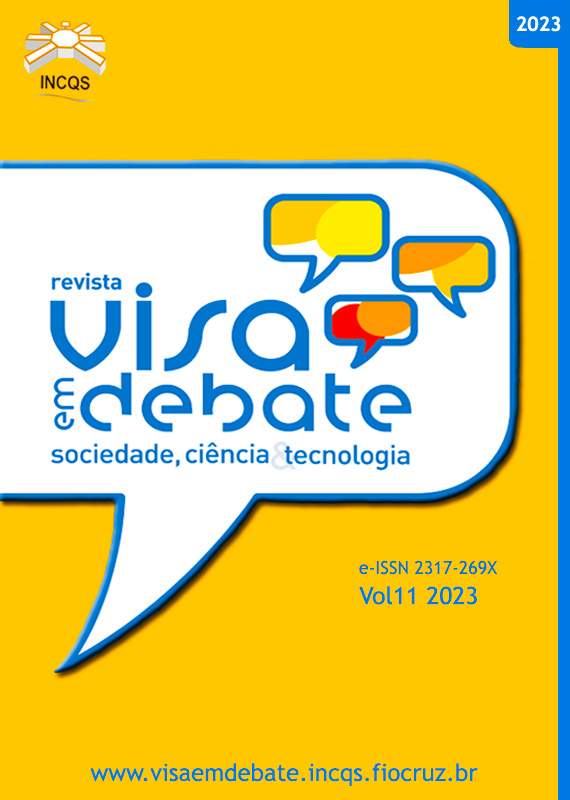Health Surveillance actions in pharmaceutical products and services in a large municipality in Northeastern Brazil
Vigil Sanit Debate, Rio de Janeiro, 2023, v.11: e02130 | Published on: 19/04/2023
DOI:
https://doi.org/10.22239/2317-269x.02130Keywords:
Health Surveillance, Health Surveillance System, Sanitary Inspection, PharmacyAbstract
Introduction: Health Surveillance acts through inspection to prevent people, establishments, or processes from producing situations of risk to individual and collective health. Objective: To present a situational diagnosis of the sanitary actions of the area of pharmaceutical products and services in the city of Fortaleza – Ceará, registered in the Fiscalize system, from January 2018 to December 2019. Method: Access to the tax system, search by registration group and registration date, with the visualization and copy of the content, individually, of each inspection. The data were stratified into notified and fined, categorized by type of establishment, neighborhood and date of occurrence, noncompliance found, and legislation used in the reasoning. The results were expressed in absolute and relative frequencies. Results: A total of 614 establishments were inspected, 948 inspections were carried out and 2,830 were found to be sanitary inadequacies, of which 385 (23.60%) were registered and 2,445 (86.40%) were reported. The irregularities found varied according to those inspected. Drugstore was the most frequent group among establishments (420/614; n = 68.40%) and the lack of mandatory sanitary documentation was the prevalent non-conformity (491/2,830; n = 17.30%). The legislation most used to substantiate irregularities was RDC Anvisa No. 44/2009, used in 45.20% (1,279/2.830) of inadequacies. In the distribution by neighborhoods, the city center concentrated the largest number of inspected (44/614; n = 7.20%). Conclusions: The results showed that most of the inspected establishments followed the legally provided sanitary standards, because only a minority of the sanitary non-conformities found were grounds for action, while the vast majority were only notified to present improvements.
Downloads
Published
Issue
Section
License
Copyright (c) 2023 Geraldo Lúcio Mendes, Paulo Sérgio Dourado Arrais (Autor)

This work is licensed under a Creative Commons Attribution 4.0 International License.
COPYRIGHT ALLOWANCE The author (s) hereinafter designated as the ASSIGNOR hereby assign and transfer, free of charge, the ownership of the copyrights related to this ARTICLE to the Vigilância Sanitária em Debate: Sociedade, Ciência & Tecnologia (Health Surveillance under Debate: Society, Science & Technology) – Visa em Debate, represented by FUNDAÇÃO OSWALDO CRUZ, established at Av. Brasil, nº 4365, Manguinhos, Rio de Janeiro, RJ, Brazil, CEP 21045-900, under the conditions set out below: (a) The terms and conditions set forth in this Agreement shall apply to the following: 1. The ASSIGNOR declares that they s(he) is (are) the author (s) and owner (s) of the copyrighted property of the ARTICLE submitted. 2. The ASSIGNOR declares that the ARTICLE does not infringe the copyrights and / or other property rights of third parties, that the disclosure of images (if any) has been authorized and that they s(he) assume(s) full moral and / or property liability for its content, before third parties. 3. THE ASSIGNOR assigns and transfers all copyrights relating to the ARTICLE to the ASSIGNEE, especially the rights of editing, publication, translation into another language and reproduction by any process or technique. The ASSIGNEE becomes the exclusive owner of the rights related to the ARTICLE, and any reproduction, totally or partially, is prohibited in any other means of publicity, printed or electronic, without prior written authorization from the ASSIGNEE. 4. The assignment is free and, therefore, there will be no remuneration for the use of the ARTICLE by the ASSIGNEE.







